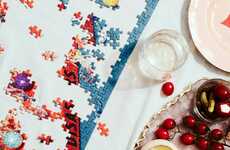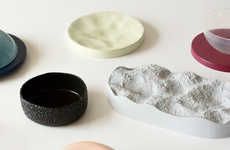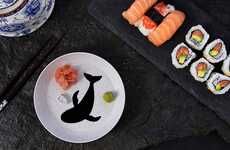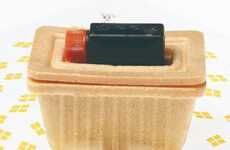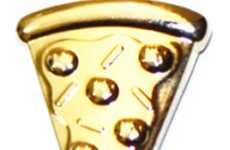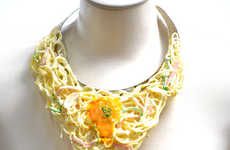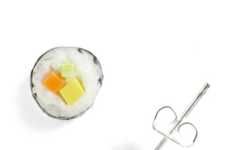
Design Professor Diane Bisson Creates Delicious Tableware
lauren festa — December 23, 2009 — Eco
References: edibleproject & thestar
Have your plate and eat it too! Mother and industrial design professor at The Universite de Montreal, Diane Bisson, had the idea of inventing an edible plate when she was dropping her son off at school one day. Witnessing heaps of plastic plates in the school garbage, she thought she should do something about it. The result? Edible dinner plates.
While the idea of edible plates is not exactly revolutionary (nacho salsa bowls anyone?) these plates are beautifully shaped, and taste great. She’s working on developing a recepie for a carob-based plate, to subsitute dessert.
While the idea of edible plates is not exactly revolutionary (nacho salsa bowls anyone?) these plates are beautifully shaped, and taste great. She’s working on developing a recepie for a carob-based plate, to subsitute dessert.
Trend Themes
1. Sustainable Tableware - The trend towards sustainable and eco-friendly tableware could stimulate research and development of new plant-based materials for designing and producing edible plates.
2. Food-based Design - Designing functional and aesthetically pleasing food-based products such as edible plates demonstrates a new opportunity for innovative design in the food industry.
3. Zero-waste Movement - Edible plates align with the growing zero-waste movement, offering a viable solution for reducing the amount of plastic waste produced by disposable tableware.
Industry Implications
1. Food Service Industry - The food service industry can incorporate edible plates as a unique and eco-friendly option, which aligns with consumer demand for sustainability and zero-waste products.
2. Packaging Industry - The packaging industry could evolve to develop new plant-based materials that can be used to design and produce edible plates, which offer a more sustainable and innovative alternative to traditional plastic plates.
3. Design Industry - Edible plate design presents an opportunity for the design industry to rethink how food and material culture intersect, encouraging the creation of innovative and sustainable food-based products.
2.6
Score
Popularity
Activity
Freshness





